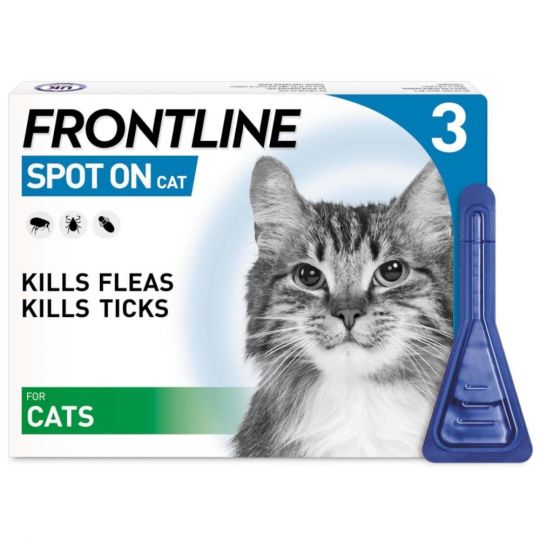Vetpharmacy.co.uk Cookie Policy : We use cookies to enhance your user experience. To find out more please view our cookie policy
How to Spot Ticks on Your Cat

You have probably heard that ticks may harm dogs, but did you know that these little parasites can also affect your feline companions? Keep reading to learn more about ticks on cats symptoms.
Ticks on cats symptoms
If your cat has been bitten by a tick that causes paralysis, it may experience a variety of complications. A typical instance begins with weakness in the hindquarters and progresses to paralysis of all four legs. Additional warning indicators may include:
- Breathing difficulties
- Appetite loss
- Nausea or dry mouth
- Drooling excessively
- Problems with swallowing
- Coughing
- Panting
As in other circumstances, cats exhibit disease signs in a manner distinct from that of dogs. The 'paralysis' sign of this illness may not be the first symptom observed in the cat. This disorder can therefore be referred to as "tick toxicity" rather than "tick paralysis."
Cats may appear to be less active than usual, hesitating to take more than a few steps before resuming a supine position (laying on their back). In addition to increased breathing effort, it is necessary to be aware of increased breathing noise. You can also hear wheezing and asthmatic sounds.
In later phases of tick toxicity, walking, staggering, and swaying issues will be increasingly obvious. Or, you may find your cat resting on its side, unable to sit at all. In this case, immediate veterinary care is required.

How long does it take for ticks on cats symptoms to show?
For a tick to be a problem for a dog or cat, it must either be quite large (more than 4 millimetres in length) or remain attached for at least four days.
Learn how to prevent tick bites in our previous blog post here:
What kills ticks on cats instantly?
There are numerous products that can kill fleas and ticks quickly. They include insecticidal shampoos, topical sprays, and orally administered short-acting systemic insecticides. All of them are successful, but they only kill the parasites on your pet at the time of treatment or for a very short time afterwards.

Treatment of ticks
Prompt tick treatment is essential for a positive outcome. Upon admission to the medical facility, the paralysis tick is removed, and the veterinarian will do a thorough tick search and neurological assessment. Treatment involves administering a tick antiserum to the cat. Prior to undergoing therapy, cats are anaesthetised to alleviate tension that could further impair their breathing.
Initiate and continue supportive treatment for as long as the cat is affected by tick paralysis (usually 3-5 days on average). Since many of these patients hadn't eaten or thrown up before they got to the hospital, they need IV hydration therapy. This protects these cats from dehydration. Oxygen treatment can be beneficial for some cats in promoting respiration and preventing muscle fatigue caused by increased respiratory effort. Laryngeal paralysis makes feline patients more susceptible to upper airway blockage, which can be exacerbated by stress.
It is vital to reduce stress in cats with evidence of upper respiratory tract injury. A good number of these cats might benefit from sedative infusions to help them rest and breathe at a normal rate and rhythm.
For effective treatment, you can also use products that kill ticks in cats. Here is one of our top picks:
Frontline Spot On

You can also shop online at Vet Pharmacy for products to help you control Flea & Tick infestation.
This blog post was written on behalf of Vet Pharmacy by Pharmacy Mentor.